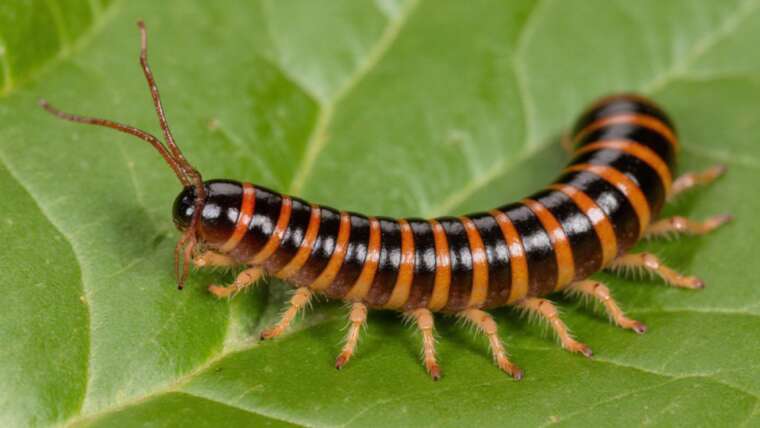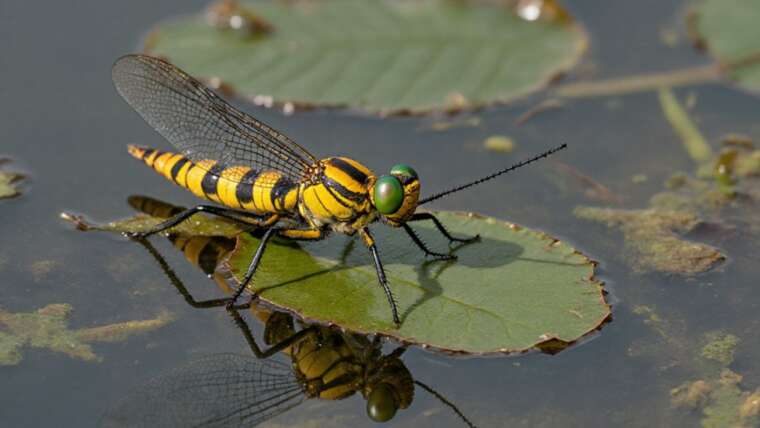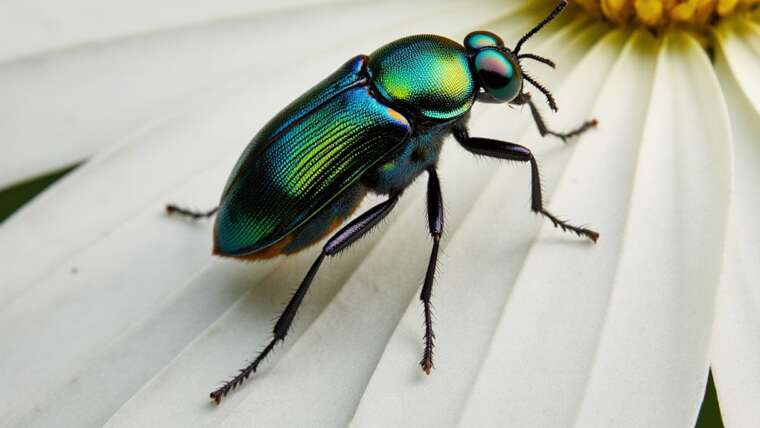A bee sting can truly be a buzzkill, causing a sudden, sharp pain that can leave you feeling on edge. It’s essential to recognize that while most stings are just a nuisance, some individuals can experience severe reactions. Understanding the signs of a bee sting allergy enables you to respond promptly and effectively. If you suspect you are experiencing a bee sting reaction, it’s always best to consult a medical professional.
Normal Bee Sting Reactions
The Mayo Clinic outlines the differences between mild, moderate, and severe (allergic) reactions, as well as reactions to multiple stings. It’s always wise to consult your physician for guidance on preventing and treating bee sting reactions or acknowledging a potential bee sting allergy.
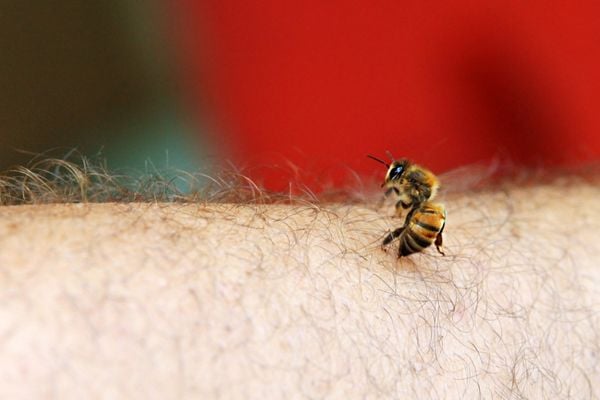
Mild Bee Sting Reactions
While most mild bee stings are manageable, individual reactions and recovery can differ significantly. Here’s how to identify a mild bee sting reaction:
- Symptoms: Sharp burning sensation, red welt, small white mark at the sting site, mild swelling.
- Recovery: Generally occurs within a few hours, but may take longer for some; hard lumps can appear at the sting site due to inflammation.
- Intensity: Classified as a normal bee sting reaction.
- Treatment: Monitor the bite, and seek medical attention if symptoms worsen. You can also take over-the-counter antihistamines to help alleviate itching or swelling.
Tip: Keeping a cold pack handy can help reduce swelling and numb the pain more effectively. A frozen bag of peas works great in a pinch!
Moderate Bee Sting Reactions
With a moderate bee sting reaction, observing specific signs is crucial. If the sting area swells or symptoms worsen, it may indicate a potential allergy and necessitate medical attention.
- Symptoms: Intense redness and swelling that may escalate over a couple of days.
- Recovery: Symptoms often last five to ten days; however, each person may vary.
- Intensity: Moderate reaction, which doesn’t necessarily predict future reactions.
- Treatment: Consult a doctor if symptoms do not improve within a few days. Open a dialogue with your healthcare provider about potential treatment options.
Tip: Elevating the affected area can further decrease swelling, especially during the first 24 hours after the sting.
How to Treat Normal Bee Sting Reactions
When a bee stings, its venom enters your system and is metabolized by the body over varying durations. For a normal bee sting reaction, the Mayo Clinic recommends these steps:
- Remove the stinger: Gently scrape it off with a credit card or tweezers. Prompt removal minimizes the risk of more venom entering your skin.
- Clean the area: Thoroughly wash the sting site with soap and water to prevent infection.
- Apply a cold compress: Use a cold pack or compress to alleviate swelling and discomfort.
- Monitor for infection: Watch for signs such as increased redness, warmth, or pus. If you also have fever, seek medical assistance promptly.
- Seek medical attention: If severe symptoms develop, immediate medical help is essential.
For more detailed information, visit the Mayo Clinic’s official website.
Tip: Having a bee sting kit with essential items (stinger removal tools, antihistamines, and instructions) can simplify your response process and give you peace of mind.
Severe Bee Sting Allergic Reactions (Anaphylaxis)
Some individuals may experience a severe, potentially life-threatening allergic reaction called anaphylaxis from a bee sting. This reaction can occur rapidly, with the immune system flooding the body with chemicals that may lead to shock and airway constriction.
- Mild anaphylaxis symptoms: Hives, itching, dizziness, vomiting, and nausea.
- Severe anaphylaxis symptoms: Difficulty breathing, throat swelling, rapid pulse, drop in blood pressure, or loss of consciousness.
- Recovery: Varies; symptoms may persist for several days and require ongoing monitoring.
- Intensity: Classified as a severe reaction, can be fatal if not treated immediately.
- Treatment: Immediate epinephrine administration (e.g., EpiPen) is critical, followed by further evaluation from a medical professional.
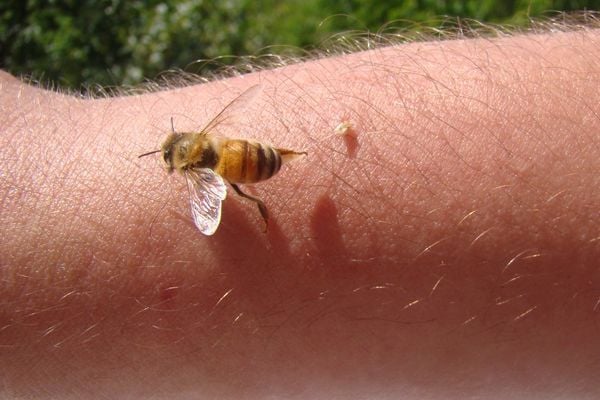
Tip: If you have a history of severe allergic reactions, always carry an epinephrine auto-injector and ensure those close to you know how to use it in case of an emergency.
Serum Sickness (Delayed Bee Sting Reactions)
Serum sickness represents a delayed allergic reaction to foreign proteins, such as those found in medications or following insect stings. Unlike immediate allergic reactions, serum sickness develops several days to weeks after exposure.
- Symptoms: Skin rash, fever, joint pain, swelling, and feelings of malaise (discomfort, fatigue). Less common symptoms may include nausea or headache.
- Recovery: Symptoms typically last several weeks after the offending agent is eliminated from the body.
- Intensity: Generally, serum sickness is not life-threatening and represents a Type III hypersensitivity reaction affecting multiple body systems.
- Treatment: Consult a healthcare professional to identify the cause and discuss appropriate treatment options.
Tip: Keeping a journal of symptoms and potential exposures can help healthcare professionals diagnose and manage serum sickness more effectively.
Multiple Bee Sting Reactions
Certain bees, like bumblebees and carpenter bees, have smooth stingers, allowing them to sting multiple times. Being stung by numerous bees can be dangerous, even for those without known allergies, as the accumulated venom can result in toxic reactions requiring emergency medical care.
- Symptoms: Nausea, vomiting, diarrhea, headache, vertigo, fainting, convulsions, and fever.
- Recovery: Usually after receiving medical treatment.
- Intensity: More than 12 stings can induce toxic reactions; emergency intervention may be necessary, especially for children or those with existing health issues.
- Treatment: Seek prompt medical attention.
Tip: If you’re in an area prone to bee activity, it may be beneficial to have an emergency plan in place, including contact information for nearby medical facilities.
Bee Sting Prevention Tips
Staying sting-free often comes down to awareness and precautionary measures. Be vigilant outdoors, particularly near flowers or uncovered food. Wear neutral colors, avoid strong scents, and remain calm when a bee approaches—move away slowly to minimize disturbance. For individuals with severe bee sting allergies, consider consulting your doctor about allergy shots, as these can reduce the severity of future reactions.
Beyond individual precautions, ongoing bee control services can help responsibly manage bee populations around your home. Our experts prioritize safe solutions, including the relocation of honey bees when possible, implementing preventive measures to keep bees away. Get started with Terminix bee control services today!
1Bee sting treatment information is sourced from the Mayo Clinic and should not be considered a substitute for professional medical advice, diagnosis, or treatment.


